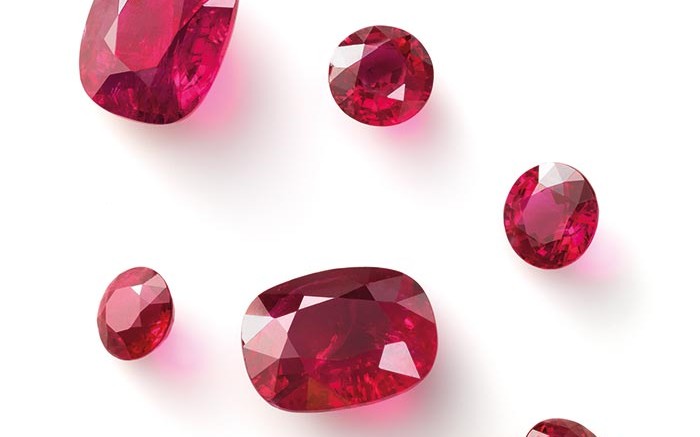It’s not every day a company in the mining sector say its project can deliver an internal rate of return (IRR) of more than 300%. But that’s what Gemfields (LSE: GEM) expects of its majority-owned Montepuez ruby deposit in Mozambique.
The company pegs Montepuez’s post-tax IRR at 311.7% and its post-tax net present value at US$996 million, based on a 10% discount rate.
Gemfields describes the ruby deposit as “the world’s single largest ruby and corundum deposit.” It was discovered in 2009 in northeastern Mozambique, 170 km west of the coastal town of Pemba, in Cabo Delgado province. Gemfields acquired its 75% stake in June 2011 for US$2.5 million, and became project operator. The remaining 25% stake is held by local company Mwiriti Lda.
The geological origin of the rubies at Montepuez is different than many of those traditionally available in the international market. The Montepuez rubies are amphibolite related rather than marble or basalt related, the company explains, and are found in both alluvial secondary deposits in gravel beds, and primary (in-situ) rubies within amphibolite.
According to a joint ore reserves committee-compliant maiden resource estimate released on July 22, Montepuez’s combined indicated and inferred resource stands at 467 million carats of ruby and corundum at an in-situ ore grade of 62.3 carats per tonne — enough to sustain a 21-year mine life producing a total of 432 million carats.
Breaking down the resource estimate, Montepuez has an indicated resource of primary mineralization of 2.1 million tonnes grading 115.4 carats per tonne, or 245 million carats, and secondary mineralization of 5 million tonnes, at 35.7 carats per tonne, or 178 million carats. Inferred resources of primary mineralization add up to 0.4 million tonne at a grade of 115.4 carats per tonne, or 44 million carats.
The resource estimate has impressed a number of analysts, including Marc Elliott of Investec Securities, who comments in a research note that the results “only reinforce our view that Montepuez could be one of the most exciting discoveries in Africa for decades.”
Elliott points to an abundance of upside at the project, while Gemfield’s team has only explored a tenth of the 336 sq. km licence area.
“This certainly suggests that Montepuez looks set to dominate global ruby supplies,” the London-based mining analyst writes in a research commentary.
Elliott estimates that based on the company’s production profile, the deposit “would supply 40% of the global rough ruby market, giving Gemfields a dominant position that we believe will enable management to drive up prices, as it has achieved for emeralds.” (Gemfields has held 18 auctions of emerald and beryl from its 75%-owned Kagem emerald mine in Zambia, which generated US$325 million for the company.)
Others say the numbers are almost unbelievable. Edward Sterck of BMO Capital Markets comments in his research commentary that “if there is one challenge, it is that the outcome [at Montepuez] almost appears too good … proof is only dependent on Gemfields continuing to grow the ruby market,” he says, “but then it has already achieved this in emeralds, with a greater than 60% compound annual growth rate in realized prices since 2009 — quite a track record!”
The resource estimate was calculated by SRK Consulting and the life-of-mine plan sees operations progressing from bulk-sampling to full-scale production.
Gemfields hopes to increase mining capacity from 3.3 million tonnes per year to 5.6 million tonnes per year by July 2017, and bump up the processing rate to 1.3 million tonnes of ore a year from the current 399,000 tonnes of ore per year. (Between August 2012 and the end of March 2015, Montepuez produced 16.1 million carats of ruby and corundum, and the company has held four auctions of rough ruby and corundum for revenues of US$122 million.)
The company estimates US$305 million in life-of-mine capital expenses, and says Montepuez could yield US$2.8 billion in cash.
After releasing Gemfield’s maiden resource estimate, BMO Capital Markets’ Sterck raised his target price from £0.75 to £0.90 per share, while Investec’s Elliott increased his target price to £0.90 from £0.69. At press time the company’s shares were trading at £0.58. The company has 543 million shares and a £318-million market cap. In addition to Montepuez and its Kagem emerald mine, Gemfields owns half of the Kariba amethyst deposit in Zambia, and in January 2013 acquired the Fabergé brand.
Significant shareholders in the company as of May 1 include Pallinghurst Resources, with 38.4%; Fabergé Conduit Ltd., 18.2%; Investec Pallinghurst (Cayman) LP, 9.9%; NGPMR (Cayman), 8.2%; BlackRock Investment Management Ltd., 3.4%; and Platinum Asset Management, which holds 2.9%.


Be the first to comment on "Gemfields unveils maiden ruby resource"